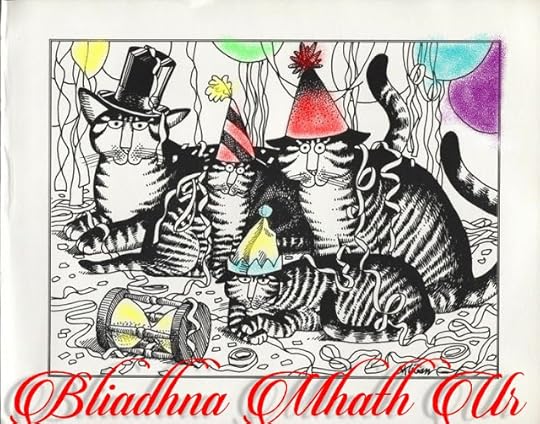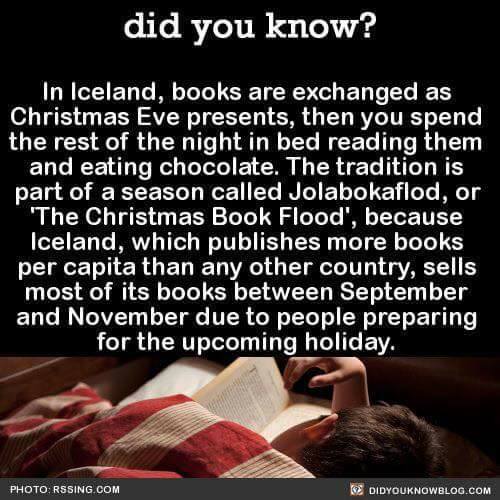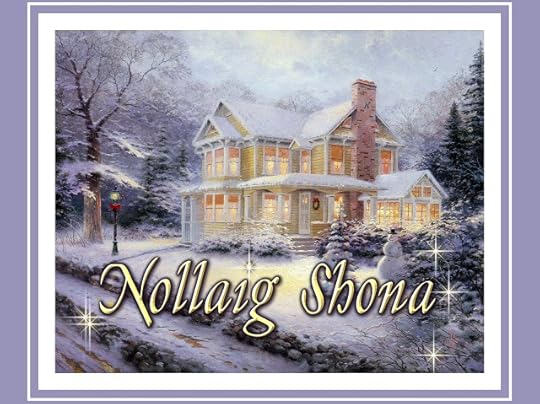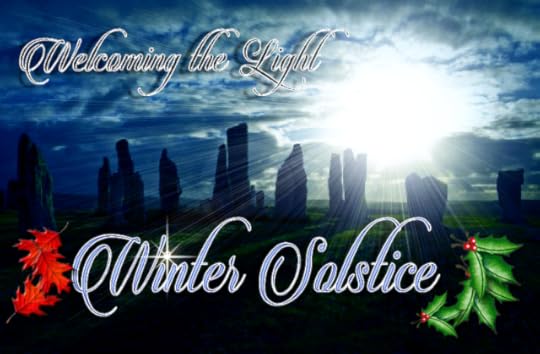Deborah Macgillivray's Blog, page 22
December 31, 2017
Bliadhna Mhath Ùr - Happy New Year!!!
Published on December 31, 2017 17:30
bliadhna Mhath Ùr - Happy New Year!!!
Published on December 31, 2017 17:30
December 29, 2017
Happy Hogmanay -- New Years Scottish Style
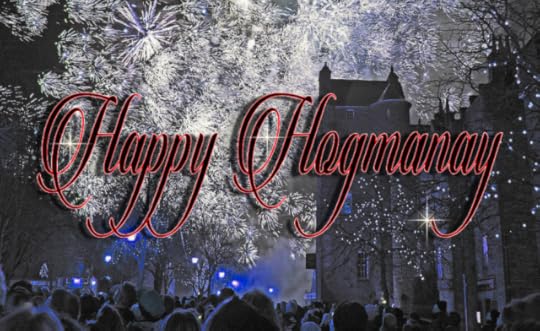
Ever heard of Hogmanay? Well, it is Scotland's New Years celebration. The celebrating runs longer and has many traditions that find their roots in ancient times. They echo back to the Twelve Days of Christmas, where you held Christmas Eve, Christmas and Boxing Day, and celebrated through Twelfth Night.
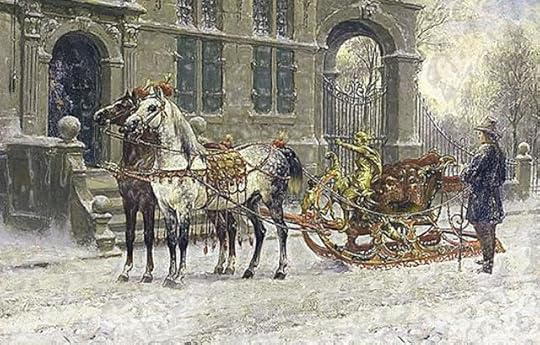
My family kept Christmas Eve and Christmas Day for family only. On Boxing Day, we would get out the sleighs (used to be more snow back then!) and go visiting. We took gifts to neighbors and friends. I thought this day more fun. Riding in the old-fashioned sleighs, and being welcomed into homes for eggnog or warmed cider to shake off the chill, were such wonderful memories. Sadly, the sleighs haven’t been used for years, as we see fewer and fewer White Christmases. Also, the family has scattered and finds it harder to come together like we used to.
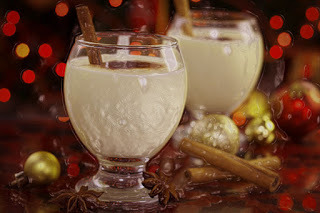
With the end of Christmas, the celebrations in America basically slow. Decorations are taken down and stored for another year. On the other side of the Pond, amazing Hogmanay parties in Scotland are just getting underway, and in some instances lasting over several days.
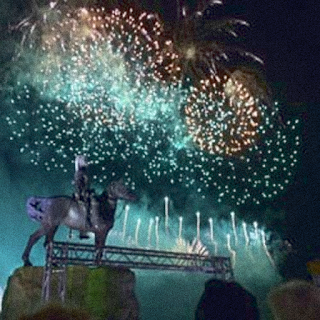
The Hogmanay name first showed in written records around the early 1600s, but many of the traditions come from a time much older. Some suggest the name stems from be old Norman French of hoguinan (New Years gift). Since the Auld Alliance saw France and Scotland sharing trade and cultures it seems reasonable. A more likely explanation is it could be a variation of Scots Gaelic og maidne (young morning). Still, the Flemish hoog min dag (great love day) might also be the source. Whichever, it shows perhaps several cultures developed the holiday along the same lines, and that it wasn't just confined to Scotland. One has no stronger provable claim to the name than another.
There are many celebrations or simple street festivals, but also you can discover the great, awe-inspiring fire-festivals—of interest to people who love history, but also eye-opening to those unfamiliar with the ancient traditions. These festivals still practice rites and rituals that go back to Pagan times, maybe thousands of years. It’s not hard to find concerts, parties, fireworks and balefires, as well offer a wide range of Scottish fare to satisfy your culinary tastes.
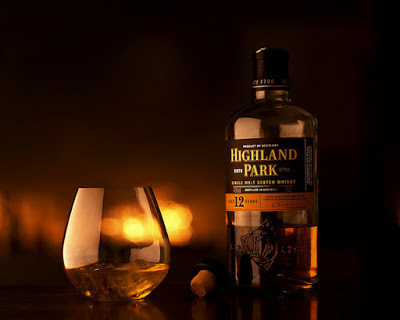
First Footing is one of the customs I always enjoyed. It was considered very unlucky for a redheaded man or women to cross the threshold after the final stroke of midnight. Not wanting to start the year off on the wrong foot, it was hoped a tall, black-haired, handsome man would arrive at the stroke of twelve. This leads to a wee bit of mischief, such as picking a likely lad who fits the bill, handing him a bottle of Single Malt, and sticking him outside, to cross back over at the appointed time. After all, who wouldn't want a tall, handsome, black-haired man to come a calling on the stroke of New Years?
Redding the House is a tradition of a “clean sweep”. It is easy to understand where this one aims—sweeping the house clear of influence of the departing year, and giving you a fresh start. You sweep out the house and clean the fireplaces. Taking out the ashes can see the practice of a scrying skill of Reading the Ashes, foretelling the future much in the manner of reading tea leaves. You are sweeping away all the negative influences that have held sway through the departing year. Once that is done, all brooms and brushes are taken outside and burnt. Keeping old ones invites the negative back in, so you start the year with new hair bushes, mops, small sweeps and brooms. Once that is done, you use lavender, cedar and juniper branches to purify the house, dragging these over windows and doors to protect the house and seal it away from evil spirits. Then, you burn them in the fireplace, the final step to purify the chimney. Thus, you start the New Years all anew.
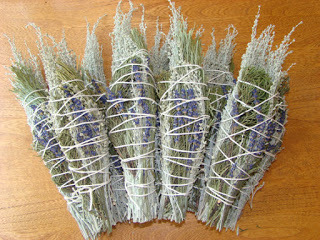
The bonfires and fire-festival are rooted in Pagan Pictish, Celtic or Norse origins. As reflected in the burning of the lavender, cedar and juniper clearing the air of negative influences, these fire-festivals are a purifying of the land. When the fires died and the ashes cooled, they were spread on farmland. In truth, this potash a fertilizer that helps keep the land arable, promoting good root growth and higher crop production. As with many ancient Pagan traditions, there is a rite, but also a logical purpose behind it. A newer celebration, but gaining more and more attention worldwide—is Up Helly Aa in the Shetland Isles. What an amazing festival! There is nothing like it! However, you can still find fire festivals at Stonehaven, Comrie and Biggar, and even Edinburgh has added this element in their Hogmanay celebrations.
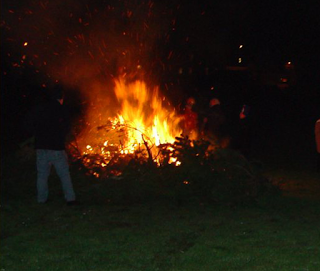
Do you sing Auld Lang Syne at New Years without truly understanding the tradition is Scottish? All over the world every year people sing Robert Burns’ version of the traditional Scottish Air. In Edinburg’s Hogmanay, people join hands for what is reputed to be the world's biggest Auld Lang Syne singing.
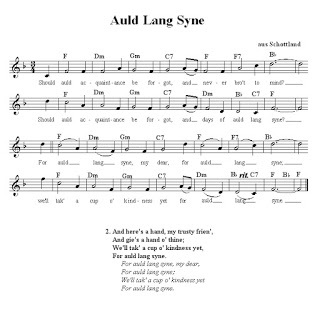
Another odd tradition is the Saining of the House. You find this mostly in rural areas, a tradition that involved blessing the house and livestock with holy water from a local stream. After nearly dying out, you are seeing a revival in recent years. Not surprising since Annis, the goddess of wells and streams is one of the oldest Pagan deities in Scotland. You still see her Clootie Wells dotting the landscape, wells dedicated to her honor (where wishing wells come from). After the house, land and stock are blessed, the females of the house, once more, perform a purifying ritual, of carrying burning juniper branches inside to fill the house with the cleansing smoke. Notice, the commonality with the Redding the House? Once the house was filled with smoke, driving out the evil influences, the windows were opened and whisky would be passed around.
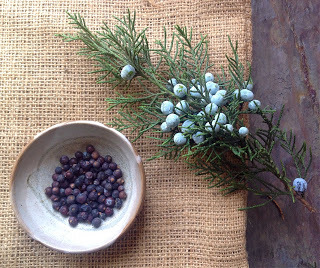
These festivals grew in popularity after the banning of Christmas in the 16th and 17th centuries. Under Oliver Cromwell, Parliament banned Christmas celebrations in 1647. The ban was lifted after Cromwell's downfall in 1660. However, in Scotland, the stricter Scottish Presbyterian Church had been discouraging Christmas celebrations as having no basis in the Bible, from as early as 1583. Thus, even after the Cromwellian ban was lifted elsewhere, Christmas festivities continued to be discouraged in Scotland. In fact, Christmas remained a normal working day in Scotland until 1958 and Boxing Day did not become a National Holiday until much later. Slowly, people began to go back to memories of olden days to find ways to make merry and celebrate. Thus, Hogmanay became a mid-winter celebration to chase away the darkness and welcome the light.

Published on December 29, 2017 16:00
December 25, 2017
Happy Boxing Day!!

To my family, Christmas Eve was special. All the activity in getting ready was a flurry of magical joy. We opened presents at Midnight, and then Christmas Day was for family only.
But I often thought Boxing Day was even more special. Back when I was small, we often had deep snows at Christmas, so my grandfather would get out the sleighs and hitch up the horses, and then we would load up boxes of gifts for friends and neighbors. And we would go calling. This was so much fun, and I saw giving was more special than getting.
Rarely is there snow these days, and I don't get back home anymore. Times change, but I do so miss their special Boxing Days, and my heart yearns for riding in the sleighs, singing carols and visiting everyone.

Published on December 25, 2017 23:22
Christmas Tradition
Published on December 25, 2017 04:30
December 24, 2017
December 23, 2017
Wishing you all the best this Holiday Season
Published on December 23, 2017 04:27
December 22, 2017
Celebration of Bowcock's Eve in Cornall
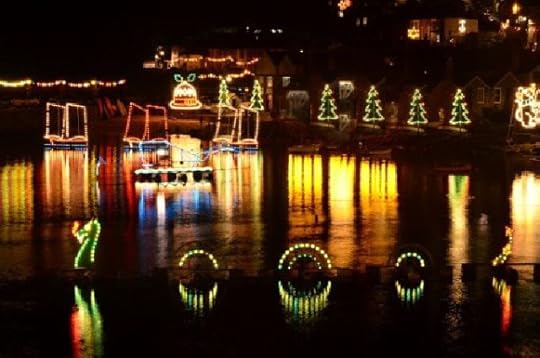
Well, take Candy out tomorrow to celebrate this wonderfully quaint holidayBowcock's Eve in Cornwall, England
Tom Bawcock's Eve is an annual festival, held on 23 December, in Mousehole, Cornwall, England.The festival is held in celebration and memorial of the efforts of legendary Mousehole resident Tom Bawcock to lift a famine from the village by going out to fish in a severe storm. During this festival Stargazy pie (a mixed fish, egg and potato pie with protruding fish heads) is eaten and depending on the year of celebration a lantern procession takes place.

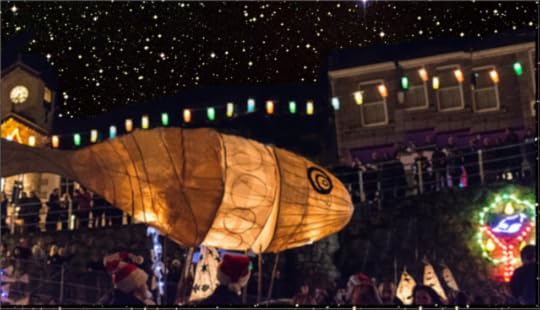
FOR THE CRUST:2 1⁄4 cups flour, plus more for dusting1 tsp. kosher salt1 tsp. mustard powder12 tbsp. unsalted butter6 tbsp. ice-cold water
FOR THE FILLING:6 slices bacon, cut into one inch pieces2 tbsp. unsalted butter1 medium yellow onion, finely chopped1⁄2 cup chicken stock1⁄3 cup crème fraîche2 tbsp. English mustard2 tbsp. finely chopped parsley1 tbsp. fresh lemon juice2 eggs, beatensalt and pepper, to taste|8 fresh sardines, cleaned, heads attached3 eggs, hard-boiled, peeled, and sliced
InstructionsCrust: Whisk flour, mustard, and salt in a bowl. Using blend butter into flour mixture, forming pea-size crumbles. Add water. Work dough until smooth but with visible flecks of butter. Divide dough in half and flatten into disks. Wrap disks in plastic wrap; chill 1 hour before using.Filling: Heat bacon in a 4-qt. saucepan over medium-high heat. Cook until slightly crisp, 5–7 minutes. Transfer bacon to paper towels to drain. Add butter and onion to pan. Cook until golden, 5–7 minutes. Remove from heat; whisk in stock, crème fraîche, mustard, parsley, lemon juice, half the egg, and salt; set aside.
Heat oven to 400°. On a lightly floured surface, roll 1 disk of dough into a 12” round. Fit into a 9” pie plate; trim edges, leaving 1” dough overhanging edge of plate. Arrange sardines in a clocklike pattern with heads resting along edge of crust. Pour filling over sardines; top with reserved bacon, the hard-boiled eggs, salt, and pepper. Roll remaining disk of dough into a 12” round; cut eight 1” slits in dough about 2” from the edge. Place over top of pie and pull sardine heads through slits. Pinch top and bottom edges together and fold under; crimp edges. Brush with remaining egg and cut three 1”-long slits in top of pie; bake until crust is golden and filling is bubbling, 35–40 minutes. Let cool slightly before serving.





Happy Bowcock's Eve!!!

Published on December 22, 2017 19:27
December 21, 2017
Welcoming the Solstice
Published on December 21, 2017 02:46
December 16, 2017
The Small Things of Christmases Past

Sometimes, it's the small things that mean Christmas. I recall when this flying angels came out. You lit a couple candles, and the heat caused the blades to turn, and three angels with trumpets would spin around. Silly. Cheap.Little clappers would strike bells. But I recall watching it and the shadows it would through in a dark room and I would feel the world was okay. I sure wish I had a set of them right now.
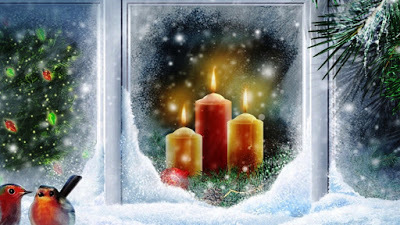
Published on December 16, 2017 23:44

